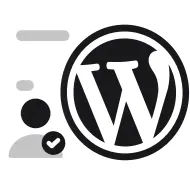Quick Summary:
- Poor code quality slows growth and raises costs.
- Fix issues with a structured audit and refactoring process.
- Improve testing, update systems, and optimise performance.
- Maintain code quality with continuous monitoring and active management.
Table of Contents
- Introduction
- Why Poor Code Quality Happens
- 1. Legacy Code and Technical Debt
- 2. Complexity Without Clarity
- 3. Inconsistent Coding Standards
- 4. Poor Testing and QA Culture
- 5. Performance and Scalability Neglect
- The Impact of Poor Code Quality
- How We Fix Poor Code Quality
- Phase 1: Assessment & Understanding
- 1. Codebase Audit
- 2. Metrics & Performance Snapshot
- 3. Stakeholder Interviews
- 4. Define Goals
- Phase 2: Refactoring & Cleanup
- 1. Modularise & Structure
- 2. Standardise Coding Style
- 3. Update Dependencies & Remove Dead Code
- 4. Improve Test Coverage
- 5. Performance Optimisations
- Phase 3: Deployment & Monitoring
- 1. Staged Deployment
- 2. Continuous Integration / Continuous Deployment (CI/CD)
- 3. Monitoring & Alerts
- 4. Documentation & Knowledge Transfer
- Phase 4: Ongoing Management & Scaling
- Continuous Monitoring & Early Warning Systems
- Scheduled Maintenance & Health Checks
- Performance Optimisation Aligned with Business Events
- Documentation, Training & Team Alignment
- Feedback Loop & Issue Triaging
- Best Practices & Principles for Sustainable Code Quality
- Use Clear, Semantic Naming & Structure
- DRY (Don’t Repeat Yourself) & KISS (Keep It Simple, Stupid)
- High Test Coverage & Reliable Tests
- Performance-Aware from the Start
- Documentation & Code Comments
- Monitoring & Feedback Loops
- Score UX Metrics & Core Web Vitals
- Common Code Quality Issues & How We Address Them
- Issue: Spaghetti Code
- Issue: Outdated Libraries & Security Risks
- Issue: Slow Response Times / Poor Performance
- Issue: Fragile Code & Frequent Bugs
- Issue: Scalability Bottlenecks
- Case Study Snapshot
- Migrating from Poor Code to High Quality: A Checklist
- Why Choose Us for Code Quality Fixes
- Conclusion
Introduction
Poor code quality is one of the hidden killers of digital growth. When your website or application is built on messy logic, outdated frameworks, unclear structure, or inefficient architecture, everything from performance to scalability suffers. At Qrolic Technologies, we’ve helped dozens of high-traffic websites transform brittle systems into robust, future-ready platforms. In this guide, we’ll walk you through why poor code quality happens, how we diagnose and fix it. This will empower you (or your team) to spot issues, prioritise fixes, and maintain healthy code long-term.
Why Poor Code Quality Happens
Understanding the root causes helps you address them more effectively.
1. Legacy Code and Technical Debt
When code has been around for years, built on older frameworks or patched repeatedly without refactoring, it accumulates “technical debt”. This means that new features slow down, bugs multiply, and edge-cases break unexpectedly.
2. Complexity Without Clarity
Complex logic may be necessary, but when it lacks clear structure, documentation, or modularity, it becomes hard to maintain. Developers spend more time reading code than writing it.
3. Inconsistent Coding Standards
When multiple developers work without a unified coding standard (naming conventions, file structure, comment style), the result is fragmented code that doesn’t “feel” like one system. It’s harder to onboard new team members and harder to manage bugs.
4. Poor Testing and QA Culture
If code is shipped with minimal testing, or the test suite is brittle/absent, regression bugs creep in. Poor test coverage means developers fear touching code because they might break something.
5. Performance and Scalability Neglect
High-traffic websites need code that scales. If a site suddenly slows down under load, crashes during peak traffic, or exhibits poor Core Web Vitals, the underlying code quality is likely a culprit.
The Impact of Poor Code Quality
Why it matters beyond just “it looks messy”.
- Slower time to market: Every change takes more effort, reducing agility.
- Higher costs: More developer hours, more bugs, more fixes.
- Bad user experience: Slow load times, broken features, unpredictable behavior.
- SEO effect: Poor performance and bad user experience can negatively affect search rankings.
- Risk of failure: At scale or peak traffic, unstable code can cause downtime or data loss.
How We Fix Poor Code Quality
Here’s our four-phase systematic process.
Phase 1: Assessment & Understanding
1. Codebase Audit
We perform a full audit: file structure, dependencies, naming conventions, outdated libraries, test coverage, documentation.
2. Metrics & Performance Snapshot
We measure load times, database performance, server response, API performance, error logs.
3. Stakeholder Interviews
We talk with development, QA, ops teams to understand pain points, bottlenecks, recurrent issues.
4. Define Goals
Clear KPIs (e.g., load time less than 3 s, test coverage > 80 %, fewer than X bugs per release) and roadmap.
Phase 2: Refactoring & Cleanup
1. Modularise & Structure
Break down monolithic code, create reusable components or modules, adopt clear folder structure.
2. Standardise Coding Style
Introduce linting, establish coding standards, set naming conventions, create a shared style guide.
3. Update Dependencies & Remove Dead Code
Remove unused libraries, upgrade frameworks, fix security vulnerabilities.
4. Improve Test Coverage
Write unit tests, integration tests, ensure edge-cases are covered. Automate where possible.
5. Performance Optimisations
Query optimisation, caching strategies (object cache, page cache, etc.), asynchronous processes, lazy loading.
Phase 3: Deployment & Monitoring
1. Staged Deployment
Use staging, QA, then production. Monitor errors and rollback where necessary.
2. Continuous Integration / Continuous Deployment (CI/CD)
Automated builds, tests run on every commit, code reviews enforced.
3. Monitoring & Alerts
Use error monitoring tools, performance dashboards, log aggregation.
4. Documentation & Knowledge Transfer
Update documentation, internal wiki, onboarding guides so future devs understand the system.
Phase 4: Ongoing Management & Scaling
This is where we shift from “fix mode” to “optimise & grow mode”.
- Regular code reviews and refactoring sprints.
- Performance audits prior to major campaigns or traffic spikes.
- Scalability exercises: load testing, stress testing, concurrency checks.
- Security audits and updates.
- Continuous improvement of architecture.
Continuous Monitoring & Early Warning Systems
By capturing real-time metrics (page load times, error rates, database query times, server health), you can detect degradation before it impacts users. Setting thresholds and alerts means you can act quickly.
Scheduled Maintenance & Health Checks
Define a cadence (monthly/quarterly) where you perform check-ups: update wordpress core/plugins/themes, review custom code, assess security patches, validate backups/restores.
Performance Optimisation Aligned with Business Events
For high-traffic events (sale campaigns, new product launches, viral content), proactively scale infrastructure and optimise code. At Qrolic we supported websites that needed to handle huge concurrent users without downtime.
Documentation, Training & Team Alignment
Ensure new developers understand the architecture. Keep documentation up-to-date. Train the team on the standards and tools that keep the code clean.
Feedback Loop & Issue Triaging
Create a process for bugs/features to be logged, prioritised, and reviewed. Use retrospective meetings to identify recurring patterns and avoid regression.
Best Practices & Principles for Sustainable Code Quality
Here are key guidelines that underpin all our fixes and maintenance work.
Use Clear, Semantic Naming & Structure
Meaningful variable/function names, logical file organisation, and modular design make code more readable and maintainable.
DRY (Don’t Repeat Yourself) & KISS (Keep It Simple, Stupid)
Avoid duplicate logic; prefer clean, concise solutions. Simple code is easier to test, debug, and extend.
High Test Coverage & Reliable Tests
Automated tests give confidence when making changes. They prevent regressions and make refactoring safer.
Performance-Aware from the Start
Performance shouldn’t be afterthought. Incorporate caching, efficient queries, lazy loading, and other optimisations early.
Documentation & Code Comments
While code should be self-descriptive, comments and documentation help explain “why” not just “what”. Onboarding new developers becomes easier.
Monitoring & Feedback Loops
Live systems evolve — monitoring tools + feedback from real users help you adapt and improve.
Score UX Metrics & Core Web Vitals
Modern search engines like Google consider user experience signals (e.g., loading speed, interactivity). Poor code quality often harms these. Investing in code quality supports UX and SEO alike.
Common Code Quality Issues & How We Address Them
Here are typical “pain-points” and our approach.
Issue: Spaghetti Code
Problem: Logic scattered, functions too long, no modularisation.
Solution: Refactor into smaller, reusable modules; establish design patterns; separate concerns (data, logic, UI).
Issue: Outdated Libraries & Security Risks
Problem: Using obsolete plugins/frameworks, missing patches.
Solution: Inventory dependencies, upgrade safely, replace unsupported code, set automated alerts for vulnerabilities.
Issue: Slow Response Times / Poor Performance
Problem: Poor database queries, blocking operations, no caching.
Solution: Profile queries, add caching layers (object cache, page cache), optimise assets, adopt asynchronous processing.
Issue: Fragile Code & Frequent Bugs
Problem: Any change leads to breaking other parts.
Solution: Introduce unit/integration tests, enforce code review, adopt CI/CD pipelines, improve error logging and tracing.
Issue: Scalability Bottlenecks
Problem: Site crashes under peak load, concurrency issues.
Solution: Load testing, horizontal scaling, stateless components, use of message queues, autoscaling infrastructure.
Case Study Snapshot
A real-life example: A data-heavy WordPress site we tackled went from 30 seconds load time to under 4 seconds after our refactoring, caching strategy, and code cleanup. This kind of dramatic improvement shows that investing in code quality pays off.
Migrating from Poor Code to High Quality: A Checklist
Here’s a practical checklist to guide your project:
- Inventory all code, plugins, libraries, and dependencies.
- Run a performance baseline: load times, Core Web Vitals, failure rates.
- Review code structure and identify modules to refactor.
- Establish coding standards and enforce via linting and reviews.
- Write missing tests and fix broken ones.
- Upgrade/replace outdated components.
- Add caching and optimise critical paths.
- Deploy changes in staging, monitor, then production.
- Implement continuous monitoring and alerting.
- Schedule recurring audits and performance reviews.
Why Choose Us for Code Quality Fixes
At Qrolic Technologies, we specialise in enterprise-grade WordPress and large-scale custom development. We understand complexity, performance demands, and business outcomes. We ensure:
- Deep technical expertise across code, databases, infrastructure
- Focus on real business metrics (performance, conversion, traffic)
- Transparent communication: you know what we’re doing and when
- Long-term partnerships: ongoing maintenance, not just one-time fixes
Conclusion
Poor code quality doesn’t just slow things down — it slows growth, aggravates teams, and undermines business outcomes. By following the structured process above — assessing, refactoring, deploying, and managing actively — you can turn brittle systems into high-performance, maintainable platforms. Performance, scalability, and maintainability become strengths rather than liabilities.
If you’re ready to move from messy code to smooth operations, let’s talk. Contact us and we’ll help turn your codebase into a competitive asset.






